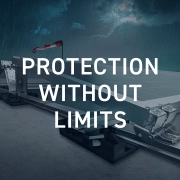As you head further north, away from the equator, the difference in seasonal daylight hours becomes more pronounced. At the furthest reaches of human habitation there is no daylight at all for months on end. From a solar PV perspective, that’s pretty much the end of the conversation! Thankfully, most people live somewhere more hospitable. The bi-annual changing of the clocks — an hour forward in spring, an hour back in autumn — brings into sharper focus the challenges posed by the fluctuating amounts of solar energy received throughout the year and raises the important issue of oversizing the DC-side of a solar PV system.
What is oversizing
Simply put, oversizing occurs when the DC-side of the PV system — and for this purpose we can really think specifically about the solar panel array — can produce more DC energy than the inverter can effectively convert to AC energy. At first glance this seems counterintuitive, and a balanced system would appear to be most efficient. However, the size of the DC-side is calculated based on the anticipated peak performance of the array. Peak performance can be expected when we have clear skies, a high sun, cool temperatures and plenty of hours of daylight… So, while the array ‘can’ produce more DC energy than the inverter can use, for a vast majority of the time it doesn’t.
More often some aspect of the environment is not optimised for solar energy production. This could be a low sun angle, cloud, shading or soiling. So, installing MORE panels on a roof, capable of potentially producing more DC energy than the inverter can make use of, makes sense for those of us living in the Northern Hemisphere, and even more so for those who live under the shy British sun.
Don’t design for the peak
Not all hours are created equally for solar energy production. There are only a few hours a day, and realistically only a few days a year, that solar panels are producing at their absolute maximum DC capacity. The rest of the time this will be reduced.
Presuming the peak production of the solar panel array is exactly matched to the inverter’s capacity the only time the inverter is producing at its maximum capability is at the top of the curve (Fig.1). During the rest of the day — or all day outside of high summer — the system produces much less than its maximum capacity, which means that power is being left on the table, or in the sky, so to speak. When you ‘oversize’ a system, it will be able to produce more DC energy for more of the time, keeping the inverter closer to its maximum capacity for longer.
In the rare instances that the module array is producing more energy than the inverter can convert, the excess is ‘clipped’, meaning it dissipates as heat. Unless there’s somewhere to store it.
DC-coupled batteries make oversizing an even better choice
By using DC-coupled battery like the SolarEdge Home Battery, the excess energy that would normally be ‘clipped’ can be used to charge the battery for use later. The SolarEdge Home Battery performs fewer energy conversions than AC batteries, so more energy is retained, and even more savings seen against energy bills.
So how does it add up? A real example.
Every system is different because there are so many variables both across a single day and the whole year. How much sun? How many panels? Geographical location? Orientation on the roof, local shading, weather patterns, how many birds are doing their business on the panels… We can explore the benefits by looking at a completely ordinary British residential installation as an estimation. The panels are all facing the same way.
Installing 12 panels (Fig. 2): 12 x 350w = a 4.2kWp system. Using a G98 compliant 3.68kW inverter, the system is oversized by 14%. The estimated annual production is 4250kWh.
However, with 16 panels installed (Fig. 3): 16 x 350w = a 5.6kWp system. With the same G98 compliant 3.68kW inverter, the system will be oversized by 52%. Estimated annual production is 5590kWh.
The same inverter coupled to an additional four solar panels gives in this example an increase of 31% in annual energy production and a corresponding decrease in how much power is taken from the grid.
For those of us in more northerly latitudes, the number of daylight hours is greatly reduced in the winter — in the centre of the UK the difference in day length between the longest and shortest days is a staggering nine hours! And with a sun that is lower in the sky when it does make an appearance, oversizing lets us gain more benefit from the available solar energy by simply adjusting the balance of the system.
To successfully oversize a solar PV installation, an inverter with a generous oversizing capacity is required. Not all inverters provide this. SolarEdge inverters all allow for oversizing of different amounts. The newest SolarEdge residential inverters allow for 200% oversizing, meaning even the coldest, cloudiest and shortest winters day can provide energy to the home and offset rising energy costs.












